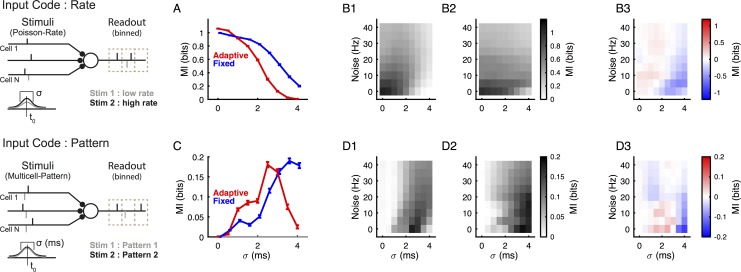Fig 3. The adaptive threshold neuron is more informative for high temporal precision and low noise than the fixed threshold neuron.
Two types of encoding (left) were investigated on the input side, either a classical rate encoding (top), where the number of input spikes carry the information but spike times are drawn randomly from a normal distribution centered at t0, and a pattern encoding (bottom), where the spatiotemporal pattern of inputs encodes the information and spike times are hence precise across repetitions. In both cases, the temporal precision (σ) according to which the stimuli are drawn is important (bottom). (A) Responses of the adaptive threshold model neurons (red) encode information mostly at low temporal spread σ, while the fixed threshold neurons (blue) possess a wider range of encoding w.r.t. to σ if information is rate-encoded. (B) This relationship holds across a wide range of noise inputs, with adaptive threshold neurons encoding generally better for lower values of σ, and fixed threshold neurons for higher (B3, the differences in mutual information between adaptive and fixed threshold models). Color mapping here represents information. Noise was modeled as independent Poisson spike trains with constant rate for each input neuron; there were 100 input neurons in total. (C) A similar relationship in information encoding between the models is observed when information is decoded from the temporal pattern of incoming spikes. Again the adaptive threshold model performs better for low σ. (D) This relationship holds only for a limited range of noise, after which point the differences between the models becomes fairly small.

